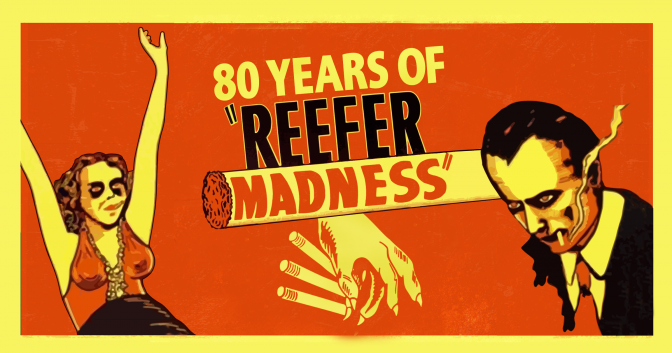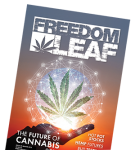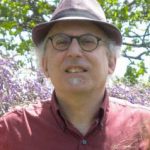80 Years of Reefer Madness (Part 2): From Nixon to Trump

In Part 1, Paul Armentano covers the Marijuana Tax Act. which banned marijuana federally in 1937, and the Controlled Substances Act, which did the same in 1970. Part 2 begins with Richard Nixon’s War on Drugs.
President Richard Nixon launched the modern U.S. War on Drugs after having run on a platform of “law and order.” It fit perfectly with his appeal to people who feared and resented the 1960s rebellions by African-Americans, anti-war leftists, hippies, gays and lesbians, and “women’s libbers.” In the fall of 1969, his Operation Intercept virtually stopped traffic at the Mexican border for three weeks, searching almost every vehicle trying to cross in an effort to stem pot smuggling. Its effect on the nation’s weed supply disproved the “gateway theory”: It showed that the lack of marijuana leads users to try other drugs.
While crime was rising rapidly, and some of it was related to heroin addicts robbing and stealing, Nixon’s War on Drugs had blatant cultural and racial elements. He personally believed that Communists and left-wingers were «pushing the stuff, they’re trying to destroy us.”
“We knew we couldn’t make it illegal to be either against the war or black, but by getting the public to associate the hippies with marijuana and blacks with heroin, and then criminalizing both heavily, we could disrupt those communities,” former Nixon adviser John Ehrlichman told journalist Dan Baum in 1994. “Did we know we were lying about the drugs? Of course we did.”
Despite Nixon’s call for “all-out war,” pot proliferated pervasively in the 1970s. At rock concerts by bands like the Grateful Dead, Led Zeppelin and Pink Floyd, clouds of smoke would fill arenas packed with thousands of music-loving stoners. Headshops selling metal pipes, plastic bongs, rolling papers and roach clips popped up on Main Streets and in shopping malls.
The annual number of arrests for pot, less than 100,000 in 1968, passed 400,000 by 1973. With penalties in many states draconian—Alabama and Louisiana had mandatory-minimum sentences of five years in prison for possession of one joint, and the maximum in Texas was life—public pressure to ease them grew.
The Decrim Wave of the ’70s
Oregon became the first state to “decriminalize” marijuana in 1973, reducing the penalty for possession of less than an ounce to a $500 fine. Ten other states followed over the next five years, including California and New York. Others tentatively allowed medical marijuana, and the federal government—despite the Controlled Substances Act’s declaration that cannabis had “no valid medical use”—established a program to grow it for qualified patients, after glaucoma sufferer Robert Randall won a court decision giving him the right to have a supply in 1975.
President Jimmy Carter, elected in 1976, at one point endorsed decriminalization, but also supported the spraying of herbicides on marijuana fields in Mexico, terrifying potheads north of the border. Meanwhile, a backlash was developing. A 1979 survey found one-ninth of high-school seniors reporting that they got high every day, and use by teenagers as young as 13 was common. Irate and politically connected parents launched a crusade to ban the sale of “drug paraphernalia.” By 1983, more than 25 states and scores of local governments had outlawed most of what was sold in head-shops. Some laws were struck down as unconstitutionally vague—how could you prove a pipe was for pot, not tobacco?—but in 1982, the Supreme Court ruled that saying a pipe was “designed for use” with marijuana was clear enough.
Reagan Ushers in «Just Say No»
The election of Ronald Reagan in 1980 heralded a massive counterattack against liberal policies going back to the New Deal. Gains made by labor unions, blacks, women, gays and the overall 1960s counterculture were threatened. “Between 1977 and 1992, a conservative cultural revolution took place,” future Drug Czar John Walters would say later. “It was called the Drug War.”
In addition to his wife Nancy’s “Just Say No” campaign directed at teenagers, Reagan had DEA helicopters do military-style raids in the pot-growing Emerald Triangle of Northern California. His Supreme Court created a drug exception to the Fourth Amendment, greatly easing restrictions on searches and allowing widespread drug testing. The DEA also cracked down on the smuggling routes from Jamaica and Colombia that developed in the ’70s, encouraging smugglers to switch to the more profitable and concealable cocaine. The emergence of a violent business in cheap, smokable crack cocaine in 1985-86 created hysteria that led to harsher laws. Federal law now mandated a minimum of five years in prison for growing 100 pot plants—the same penalty as for half a kilo of cocaine or 100 grams of heroin.
George H.W. Bush’s term, from 1989 to 1993, was arguably the peak of the Drug War. Bush’s drug czar, William Bennett, contended that casual drug users were actually worse than hardcore addicts, because they showed you could get high without being a strung-out mess. But pot arrests actually declined during these years, as law enforcement concentrated its paramilitary tactics on crack—and on neighborhoods like South Central in Los Angeles, which erupted in riots in 1992 after the acquittal of four cops who’d been videotaped clubbing arrestee Rodney King.
Pot culture was regenerating as the 1990s began, especially in hip-hop. A few political figures, notably Baltimore Mayor Kurt Schmoke, questioned the validity of prohibition. In San Francisco, the AIDS-ravaged gay community was discovering that marijuana helped relieve the disease’s symptoms. In 1991, 80% of the city’s voters backed a ballot initiative—spearheaded by gay-activist pot dealer Dennis Peron—that recommended legalizing medical marijuana, and the next year, the city’s Board of Supervisors made it the “lowest priority” for police.
The President Who «Didn’t Inhale»
The election of Bill Clinton as President in 1992 prompted wishful thinking because he famously admitted that he’d used marijuana, but “didn’t inhale.” (There are plausible rumors he preferred eating it.) Whatever his experience was, it didn’t translate into any sympathy for pot-smokers. He continued to escalate the drug war, and fired Surgeon General Joycelyn Elders for her suggesting that the nation should discuss legalization. By 1995, the U.S. had more than two million people in prison or jail, and pot arrests hit record highs, with more than 500,000 people busted for simple possession.
Much of the increase came from “broken windows” policing, in which minor offenses by young black and Latino men were considered harbingers of lawless chaos. During his two terms as New York mayor from 1994-2001, Rudolph Giuliani made marijuana arrests a top police priority, exploiting a loophole in the state’s decriminalization law: Smoking or possession “in public view” was still a misdemeanor. In 2000, there were more than 50,000 such arrests in the city. More than 85% of those arrested were black or Latino.
In the mid-’90s, the pot-legalization movement decided to focus its efforts on medical marijuana, on the grounds that sick people needed cannabis most desperately and there was much more political support for medicinal use. That strategy paid off in 1996, when California voters passed Proposition 215, changing state law to let doctors recommend cannabis for any purpose they found appropriate. “This is not medicine,” Clinton’s drug czar, Barry McCaffrey warned, “it’s a Cheech & Chong show.”
The movement’s momentum kept growing. Two years later, Washington, Oregon, Alaska, Arizona, and the District of Columbia voted to legalize medical use, followed by Maine in 1999, and Nevada and Colorado in 2000—along with Hawaii, the first state whose legislature passed a medical-marijuana law.
The Return of a Bush White House
George W. Bush, selected President by the Supreme Court in December 2000 when it prohibited Florida from recounting votes, also prompted wishful thinking among pot-smokers. Some people thought that as a self-proclaimed “compassionate conservative” and recovering alcoholic who’d never explicitly denied using cocaine, he might take a more humane position on illegal drugs. That didn’t happen. Bush picked Walters as his drug czar. The DEA regularly raided medical-marijuana dispensaries in California. In 2003, after the city of Oakland tried to regulate the industry by deputizing ganja-gardening expert Ed Rosenthal as a municipal cultivator, he was promptly prosecuted on federal felony charges. (He got one day in jail, after jurors said they’d been duped into convicting him.)
In 2001, the Supreme Court held that “medical necessity” was not a legal defense for dispensaries, and in 2005, it rejected a claim that the federal power to regulate interstate commerce couldn’t apply to homegrown weed given away to patients in the same state.
During these years, pot busts averaged more than 700,000 a year nationwide, setting a record in 2007 at 873,000—775,000 for possession and the rest for sale and cultivation. New York City averaged 40,000 arrests a year between 2002 and 2011. Atlanta and Baltimore had even higher arrest rates. By 2008, black people, 12% of the U.S. population, were almost one-third of those busted for pot. In predominantly white cities such as Boston, Minneapolis, and Charlotte, N.C., more than half the people arrested were black.
The President Who Did Inhale
Barack Obama, the nation’s first black President, prompted wishful thinking among pot-smokers as well; when asked if he’d inhaled, he answered, “That was the point.” Obama had also written sympathetically in his 1995 autobiography, Dreams From My Father, about a high-school friend in Hawaii getting busted for pot.
Initially, that didn’t translate into policy. In 2010, the Obama administration openly opposed California’s Proposition 19, an initiative for full legalization that won 46% of the vote. It harassed medical-marijuana dispensaries more intensely than Bush did, threatening landlords with forfeiture of their buildings. A series of raids in 2012 decimated “Oaksterdam,” Oakland’s cluster of dispensaries and related businesses. Washington Gov. Christine Gregoire vetoed a bill to license medical-marijuana growers and dispensaries after federal prosecutors warned her that the workers administering the regulations could be prosecuted.
That changed in 2012 when Colorado and Washington voters legalized cultivation and sales for recreational use by adults. With Colorado a swing state, Obama, who needed young voters to win re-election, was conspicuously silent. The next year, Deputy Attorney General James Cole issued a memo telling federal prosecutors they had better things to do than go after legal marijuana businesses under state law.
Voters in Oregon, Alaska and Washington, D.C. backed legalization in 2014, and the 2016 election saw four more states—California, Maine, Massachusetts and Nevada—pass initiatives to allow the sale of marijuana to adults. California, where Proposition 64 won by almost two million votes, was the biggest victory of all. Medical marijuana also broke through in the South, with Florida and Arkansas voting to legalize it.
Prohibition in the Age of Trump
But 2016 also saw the election of Donald Trump, a loudmouthed multi-millionaire whose family fortune came from renting whites-only apartments, as President. He lost the popular vote by almost three million, but carried enough states to score a victory in the Electoral College.
Trump, the first President in almost 25 years who’s never used marijuana, prompted some wishful thinking among pot-smokers because he’d previously said he thought medical use should be left up to the states. However, his choice for Attorney General, former Alabama senator Jeff Sessions, is a hardline prohibitionist who denounced the Obama administration’s cannabis policies as dangerously soft, and in 1986 remarked that he thought the Ku Klux Klan “were OK until I found out they smoked pot.”
Trump promoted himself as a “populist,” but aside from egomania and greed, two of the core aspects of his personality are authoritarianism—particularly the belief that any problem can be simply solved by bullying the designated villain—and racism, the two psychological building blocks of the War on Drugs.
If he and Sessions choose to re-escalate the war on marijuana, will they be able to take out the eight states that now allow adult use, the more than 30 that allow medical use and the industry that’s grown up to supply it? How much are they likely to try?
The bookies in Las Vegas haven’t set odds on that.
If you enjoyed this Freedom Leaf article, subscribe to the magazine today!

